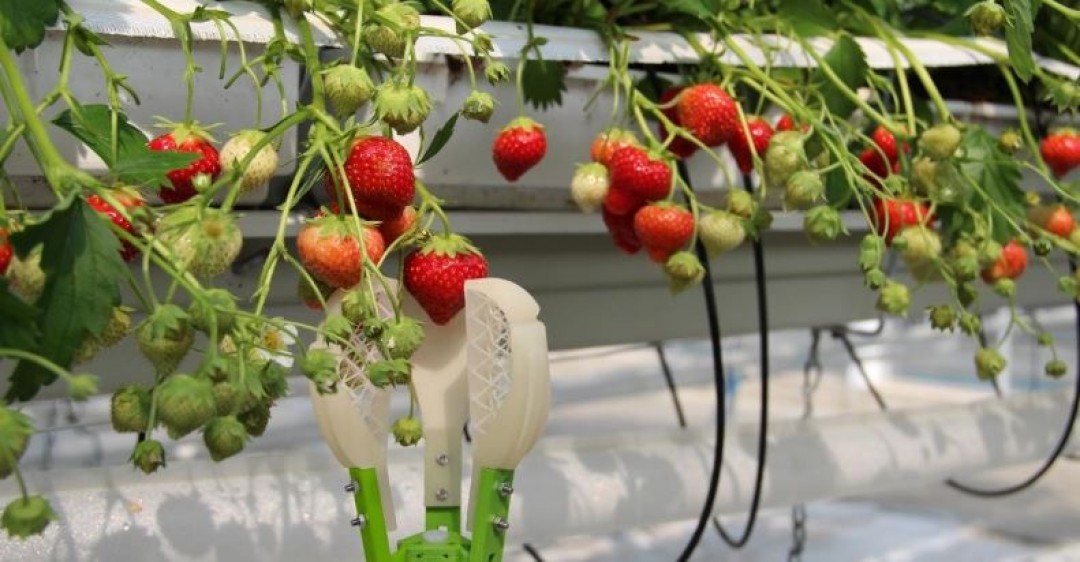
GBC PART 2: NEW TECHNOLOGIES AND SOLUTIONS TO SATISFY CONSUMER DEMAND 2017-04-06
It’s been a week since the OctoFrost team left Rotterdam and the Global Berry Congress, but the interesting topics of discussion and the new findings in terms of market trends and consumer behavior keep inspiring us.
It is clear to everyone that consumers are more demanding than ever, and satisfying all the desired expectations implies constant work and commitment from berry producers, processors and retailers, and basically everyone involved in the berry production and distribution chain.
“TECHNOLOGY IS THE FUTURE”
In order to keep the market interesting and diversified, the industry is realizing that technology is the key. “Technology is the future” says Tom Coen from Octinion. Technology is the future indeed and the best technological solutions will definitely make the difference on the market. Tom talked about Octinion’s research and development in robotics and their use for berry picking.
Robots are seen as the better, future method of picking berries because they are addressing global issues in the berry industry such as labor shortage, rising labor costs, picking and sorting quality and training of personal. All of these issues are and will be challenges for berry producers in the context of political and economic changes.
The latest development in berry cultivation methods are making it easier and more convenient for producers to use robots already today. One of these methods is the table top nursery, where robots can be more time-effective because of the ergonomically build-up space. The table top nursery is a growing global trend because it does not need fertile soil, the berries can be produced close to the market and consumers, and it allows efficient water consumption.
INCREASING INVESTMENTS IN BREEDING PROGRAMS
Excellent taste and high-end technological solutions is what will help satisfy consumers’ demand. This is mostly what you could hear during the Global Berry Congress. But how to achieve better taste? And what solution should we use to acquire that?
There is a huge interest in developing breeding programs for berries, and a lot of companies and researchers are focusing on developing the best berry varieties.
For the customer, taste is the most important and decision making factor, which is why for the growers finding the right berry variety is what matters most.
Dr. Craig Chandler from the University of Florida presented to us important research that was made in order to acquire excellent taste and longer shell life for strawberries. One of the latest variety of strawberry produced at the university can flower under any day light, without the need of direct sun light.
Producers are constantly trying to develop new varieties. Did you know that it takes between 7 to 8 years to have a new raspberry variety ready to sell on the market? There is clearly a berry boom on the market nowadays, which is why Planasa Company is working with breading research and development of plant varieties, in particular raspberries.
Planasa was able to breed the Adelita raspberry which can be produced during winter time as well. Another variety they created can produce raspberry all year round. Planasa sees raspberry breeding as an improvement in regards to tolerance to disease, better color, and better sweetness thus taste, as well as easier handling during harvesting. The biggest difficulty they see in the breeding of raspberries is to combine the properties of long shelf life and the sweetest taste, due to the high brix levels.
POST HARVESTING TECHNOLOGIES AND
ON-SITE IQF FREEZING TO PREVENT HARVEST LOSS
One of the biggest challenges and losses for berry producers starts directly with the harvesting of the berries. The losses are mostly the outcome of improper handling, transportation, poor storage and packaging solutions.
These problems can be overcome with the help of right equipment and technology. A good post-harvesting handling will help avoid berry losses and appropriate post-harvest technologies will improve the shelf-life and food safety of the products, adding value to the berries.
Anna Dyc from OctoFrost, presented the idea of on-site IQF freezing. With the help of IQF technology the berries will keep their natural appearance and structure longer as well as preserving their nutritious values at their ripening pick, immediately after harvesting. After harvest, berries start to lose their nutritious value and by the time they reach the supermarket shelfs, they will most likely have lost half of their nutrients. With on-site IQF freezing, the nutrients of the berries are ‘locked’ and preserved for a longer period of time, giving consumers the same amount of minerals, vitamins and antioxidants as they would have in the first hours after the harvest.
It will be interesting to follow and see where all of these technological developments will lead tomorrows’ berry industry and the way they will shape our future preferences in terms of berry consumption.
